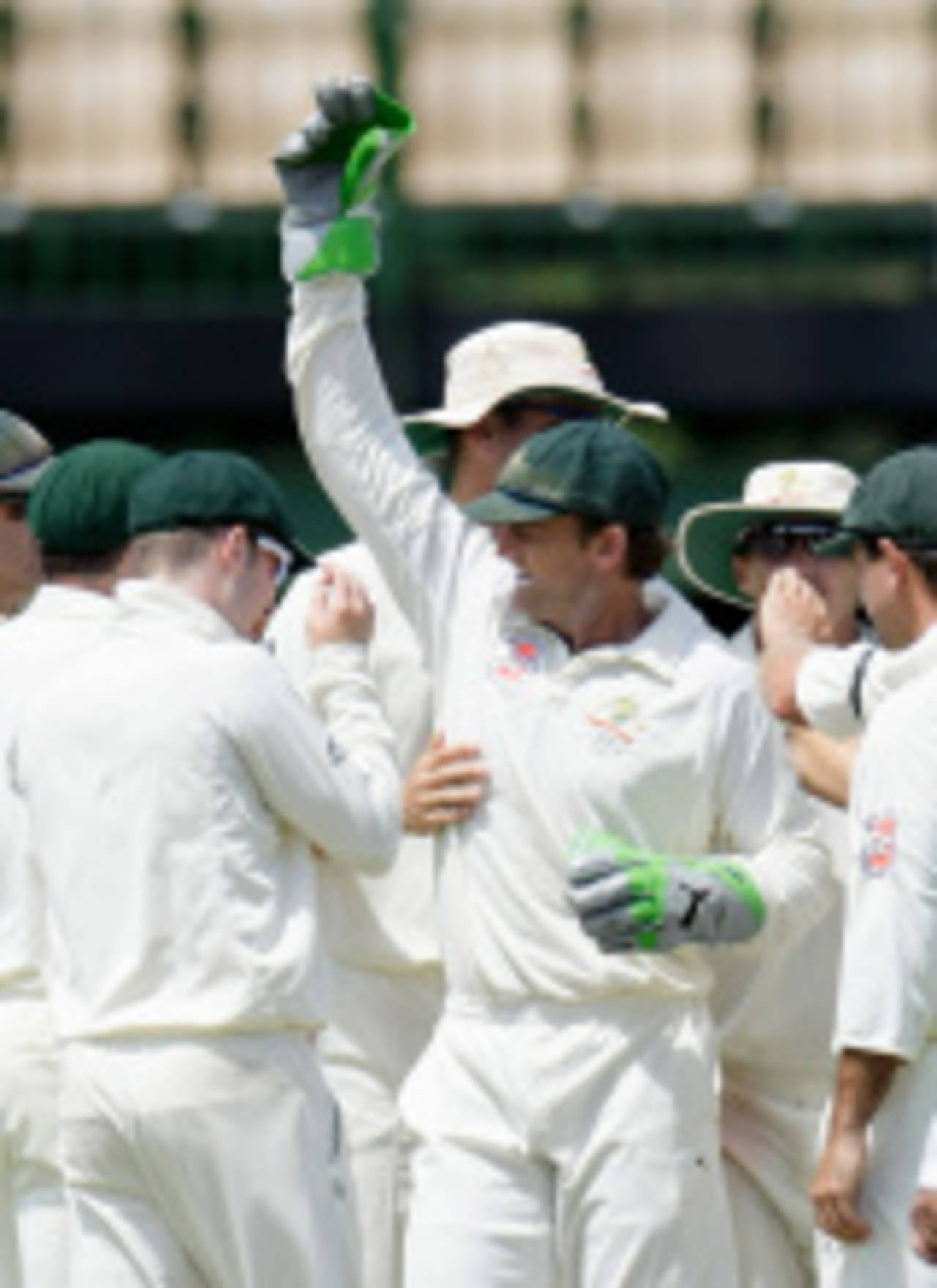A summary of Test cricket by period (Part 2)
In the first part we saw the way the numbers related to Matches, Innings, Results, Partnerships and Extras have changed over the 130 years of Test cricket

Getty Images
In the first part we saw the way the numbers related to Matches, Innings, Results, Partnerships and Extras have changed over the 130 years of Test cricket. In this second part we will cover Batting, Bowling, Keeping and Dismissals.
Let me emphasise that some of this information can be garnered using Cricinfo's excellent Statsguru. Mine will offer a different perspective and is a summarised analysis using my database.
Batting will be analysed by right- and left-hand batsmen. Bowling will be analysed by pace and spin bowling. All dismissals would be analysed. As far as the keepers are concerned, byes have already been analysed in Part 1. Here the two wicketkeeper dismissals would be covered.
1. Batting analysis 1 (average - left & right)
Period R-Avg L-Avg T-Avg
First the period changes. After a relatively difficult first period, the other seven periods have seen very little variations in batting average. The current decade has seen the best batting average of all times. This is almost 5% above the all-test average.
However the real shock comes when we see the right and left-hand figures. Barring a single period (the period in between the World Wars - no doubt caused by Bradman & Co), left-handers have consistently averaged between 10 and 30% more than the right-handers. Across all Tests there is a 15% variance. Look at the current decade. Left-handers have averaged nearly 30% more than the right-handers. I have no explanations. The readers will certainly have a few.
This is borne out by the following facts. This may explain "how" but not "why".
1. As per my records, 440 players have batted left-handed. This, out of 2525 players. A frequency of approximately one in six.
2. In the list of top 25 batting averages, there are seven left-hand batsmen. This is a much higher frequency of one in every 3.5. It explains why left-handers have a much better average. Extending it further, 107 out of 400 top averaging batsmen are left-handed. One in four!
3. In the list of top 25 run-scorers, there are eight left-hand batsmen. This is a much higher frequency of one in every three. They not only average more but score more also, it seems. Extending it further, 101 out of 400 top-scoring batsmen are left handed. Again, one in four.
I have not done any analysis on centuries since I strongly feel a century is only a personal milestone and does nothing more for the team, other than, of course the 100th run. A 99 will serve the team as much as a 100. There is a lot of unnecessary hype over a century. At least I will ignore this measure.
It can be clearly seen that the difference between Right and Left handers is less pronounced when I do a separate analysis of only batsmen who have scored greater than 1000 runs, thus clearly excluding the real tail-enders. Many thanks to Hariharan Sriram's observation.
To view the complete table, click here.
2. Bowling analysis 1 (average - pace & spin)
Period P-Avg S-Avg T-Avg
Now the split between pace and spin. The average for pace is about 5% below the all-Test average and 10% below the spin average. This is as expected and does not offer any surprises.
Since this involves every wicket taken, I have done an alternate measure. This is to consider the averages only for bowlers who have taken 100 wickets and more. For obvious reasons this can be done at a total level only and not by period.
These figures are considerably (about 10%) below the all-bowler averages. Pace averages 26.25 while spinners average 29.25, both very reasonable figures.
To view the complete table, click here.
3. Bowling analysis 2 (strike-rate - pace & spin)
Period P-S/R S-S/R T-S/R
To view the complete table, click here.
4. Bowling analysis 3 (runs per over - pace & spin)
Period P-Rpo S-Rpo T-Rpo
To view the complete table, click here.
Now let us analyse the dismissals effected.
5. Dismissals analysis 1 (bowled - % and per match)
Period Bowled Wkts % of Tot Bow/Mtch
To what can this be attributed? Improvement in technique, change in bowling line, more lbws et al.
6. Dismissals analysis 2 (lbw - % and per match)
Period Lbw Wkts % of Tot Lbw/Mtch
7. Dismissals analysis 3 (caught - % and per match)
Period Ct Others Wkts % of Tot Ct/Mtch
8. Dismissals analysis 4 (stumped - % and per match)
Period Stumped Wkts % of Tot St/Mtch
9. Dismissals analysis 5 (Ct by Wk - % and per match)
Period Ct by Wk Wkts % of Tot CWk/Mtch
10. Dismissals analysis 6 (run-outs - % and per match)
Period Runouts Wkts % of Tot RO/Mtch
I had made an offer that all this information would be available to the readers. This is going to take some time since I am preparing a comprehensive XL sheet with all the parameters for easier access and retrieval. I will make this available at a later date by providing a suitable link.
Anantha Narayanan has written for ESPNcricinfo and CastrolCricket and worked with a number of companies on their cricket performance ratings-related systems